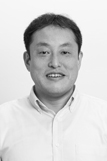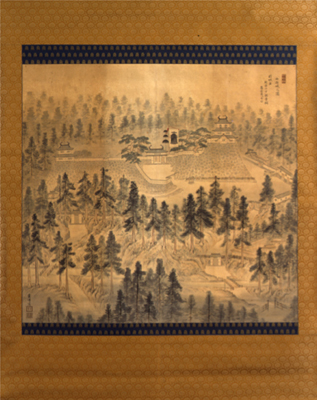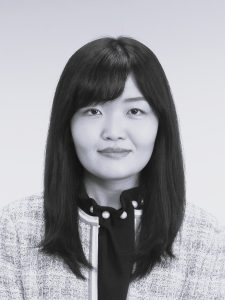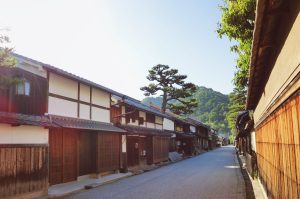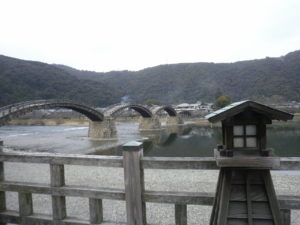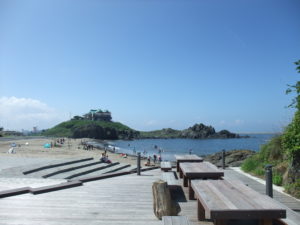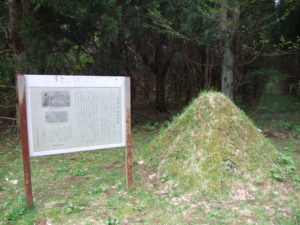Divisional Director
YANAGIHARA Toshiaki
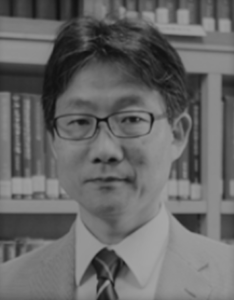 Professor(Graduate School of Arts and Letters)
Professor(Graduate School of Arts and Letters)
→ https://www.sal.tohoku.ac.jp/en/research/researcher/profile/—id-45.html
Vice Divisional Director/Professor
ARATAKE Kenichiro
Japanese history, Economic history
Theme: Identifying the economic exchange in the early modern Japanese archipelago
I mainly study the history of Japanese economy of the eighteenth and nineteenth centuries. My research findings on night soil transactions in the Osaka region have been summarized in my book (Kenichiro Aratake, Shinyo o meguru kinsei shakai: Osaka chiiki no noson to toshi [The Night Soil of Early Modern Society: The Farming Villages and Cites of the Osaka Region], Osaka: Seibundo, 2015). This study of these transactions has led me to begin studies of merchants and goods distribution across Japan. For example, I studied old manuscripts to examine the state of kitamaebune (northern-bound ships), which played a significant role in an early modern western marine route (Osaka – Ezo) and local markets. I feel it important that specialty goods of one region were distributed across the Japanese archipelago and that commoners were conscious of local brands. Also, the economic centers of the time were generally Osaka, Kyoto and Edo (called the “big three cities” of the Edo period), and the merchants who thrived there had gathered attention. There is also great historical significance in making clear the existence of the merchants who cooperated with merchants of the three cities and created footholds across Japan. Shiroishi city, Miyagi prefecture functioned as a castle town / post-station town in the Edo period; there, the influential local merchants engaged in active transactions with other city merchants. This did not only mean one merchant was managing business skillfully, but also carried great significance in the regional economy. I aim to produce research that connects small villages and towns with the history of Japan, Asia, and the world.
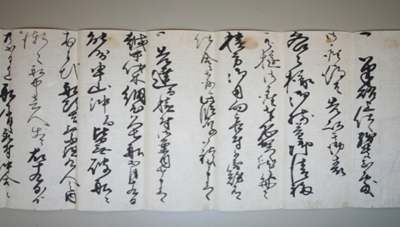
A document stating that a merchant vessel was in an accident in the Japan Sea (Held by the Yamagata Prefectural Museum, nineteenth Century)
Un’yo Koseki: Illustration of Shiroishi Castle (Possession of Shiroishi city, Miyagi prefecture, nineteenth century)
Principal areas of interest
- Night soil transactions in early modern Japan
- History of goods distribution in the Japan archipelago
- Domain finance of the Edo period
Associat Professor
CHENG Yongchao
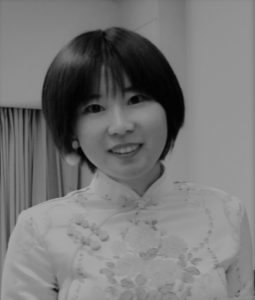 Associat Professor(Center for Northeast Asian Studies)
Associat Professor(Center for Northeast Asian Studies)
→ http://www.cneas.tohoku.ac.jp/e_data/staff/cheng/cheng.html
Assistant Professor
TERAUCHI Yuka
Early Modern History of Japan, Urban History,History of Circulation
Looking at the early modern society through the flow of people and goods
The study of merchants and the distribution of goods in early modern Japan has focused on the import and export of goods with the areas of production and the national markets as the starting point, as well as the wholesalers in Edo and Osaka which led it. However, to clarify the entire structure of distribution, we need to broaden our perspective to include consumers. Further, focusing only on well-known merchants and those referred to as “wealthy merchants” is not indicative of the characteristics of merchants of the time as a whole. Against this background, I am conducting a survey of historical materials on various merchants active in local cities. Using a variety of materials, including records related to management, we can not only enrich the history of commerce and distribution but also shed light on the actual state of society in early modern Japan.
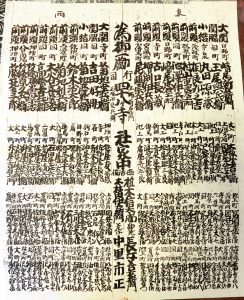 List of Merchant Houses in Utsunomiya Castle Town
List of Merchant Houses in Utsunomiya Castle Town
Omihachiman Townscape
Principal areas of interest
- Clothing Distribution Structure in Early Modern Japan
- Formation of Merchant Groups and Family Groups
- Merchants’ Business Development in East Japan
NEMOTO Minami
The History of Early Modern Japan,The History of Samurai Society and Samurai Families
“O-ie” or “Ie”: Which was important to the samurai of the early modern period?
The fundamental societal unit in early modern Japan was known as “ie” (the “family” or“household”). Although “ie” existed among those of a variety of social statuses and classes, the focus of my research is the “ie” of daimyō (feudal lords) and kashin (vassals), i.e., the families and households of the samurai. In early modern society, the “ie” of the samurai were composed of those who took orders from the daimyō. These groups of people were referred to as “o-ie.” The “ie” of the daimyō (lord) and his kashin (vassals) were included as one part of a lord’s “o-ie” and indeed could only exist within the group known as “o-ie.” Based on this premise, paramount in the minds of the early modern samurai was the perpetuation of the “o-ie.” However, research into the early modern period has shown that the daimyō could not run their “o-ie” single-handedly while paying no attention at all to the views of their kashin. At the same time, the kashin were interested in maintaining their own “ie” as well as having an interest in the larger “o-ie.” The focus of my research is identifying how the daimyō’s and kashin’s perceptions of the relationship between the larger “o-ie” and the individual “ie” affected their behavior. Using their behaviors and statements, I will analyze the perceptions held by the people who lived in the early modern samurai society regarding the relationship between themselves and the “ie” they were born into and belonged to and the larger “o-ie” that their “ie” was a part of.
 Yoshishiki Mouri Family Cemetery
Yoshishiki Mouri Family Cemetery
Kintaikyo
Principal areas of interest
- The relationship between the management and higher authorities of the “ie” in the Sendai and Hagi Domains.
- The formation and maintenance of the head and branch families in early modern samurai society.
- The relationship between the treatment and domain administration of daimyō families.
Research Fellow
SUZUKI Yoshitoki
History of Japan, History of Thought
What defines people’s behavior? —A Case Study of 19th Century ‘Tohoku’—
Since the Edo period, the Tohoku region has faced frequent disasters such as bad harvests and famines, and these have caused a large number of casualties. Moreover, industrialization was delayed after the Meiji era, and the Tohoku region was gradually positioned as a backward region. As a result, Tohoku received a negative image of “poverty” and became known as a “dark and unchanging” region, which diverges from reality. Historical studies have also argued that wealthy farmers and merchants in the Tohoku region have suppressed the nago (lower class peasants), that this is a society with significant economic disparities. However, are such theories correct? To promote new research, we have examined in detail the formation of ideas (collection formation and acceptance of books) of wealthy farmers and wealthy merchants, mainly those in the Hachinohe domain in the 19th century, and shown the diversity of these people. We have also examined how the differences in positions arose due to the uneven distribution of books. In the future, we would like to examine in more detail what regulated the behavior of people in this area, focusing on the lord of the domain and physicians residing in the village. At the same time, we would like to clarify the social and cultural characteristics, including trends in mining, a major industry in the Tohoku region in the 19th century.
One of the places where Nanbu Nobumasa, lord of Hachinohe Domain, is believed to have composed Chinese poetry (Kabushima, Samemachi, Hachinohe City, Aomori Prefecture)
Border mound between Morioka Domain and Sendai Domain (Boundary mound) (Nishine, Kanegasaki Town, Isawa District, Iwate Prefecture)
Principal areas of interest
- Formulation of the idea of wealthy farmers and wealthy merchants in 19th century “Tohoku”
- Mechanism of “Pollution” in 19th Century Mines
- History of book loan networks and public libraries
ISHIKAWA Mitsutoshi
Medieval History of Japan History of Law, Trials and Society
Law, Trials, and Legal Consciousness in Medieval Japan
In medieval Japan, an individual filing a lawsuit needed to have a connection with the person conducting the trial. Therefore, litigants needed to secure and maintain ties with samurai families (shogunate), the Imperial Court, and feudal lords, etc., who would conduct trials. Further, medieval law was not only issued by the samurai families but the Imperial Court and the feudal lords in their respective domains of control, and those under their rule would sometimes use the law to obtain winning judgments. Though the litigants were subject to the laws issued by those in power, they worked to realize their rights by demanding just trials and laws from those in power.
Tsurugaoka Hachimangu (Kamakura City, Kanagawa Prefecture)
Principal areas of interest
- Law and Trials in Early Medieval Japan
- Legal Consciousness of Litigants
- Relationship between Litigants and the Judicial Organizations

